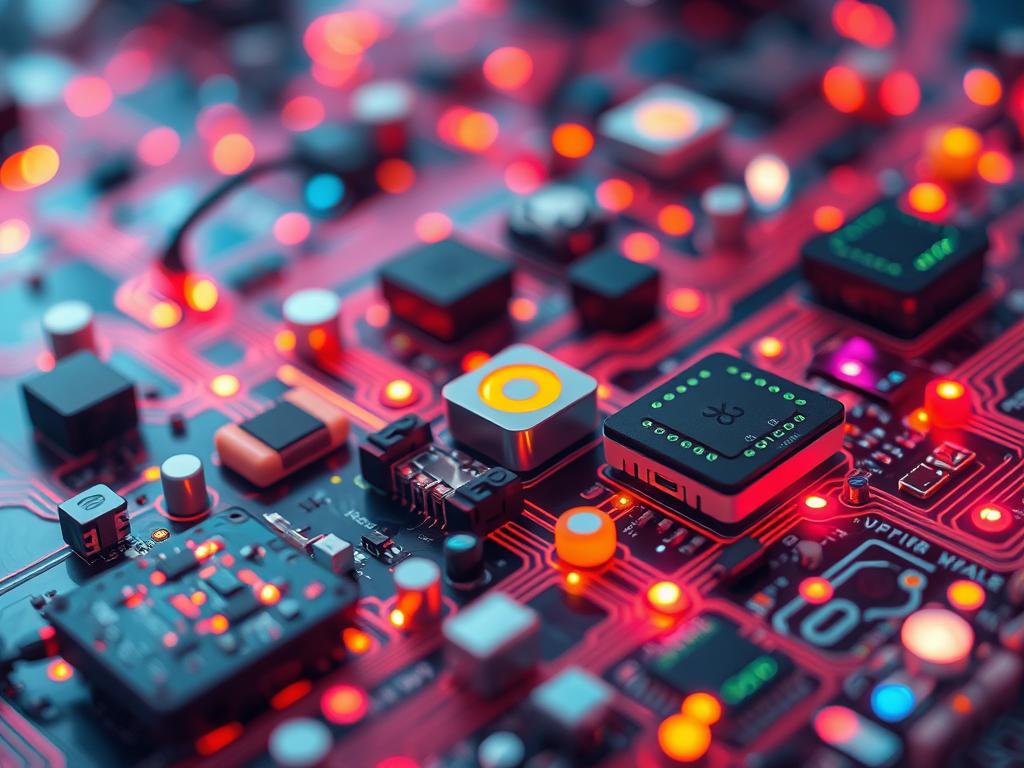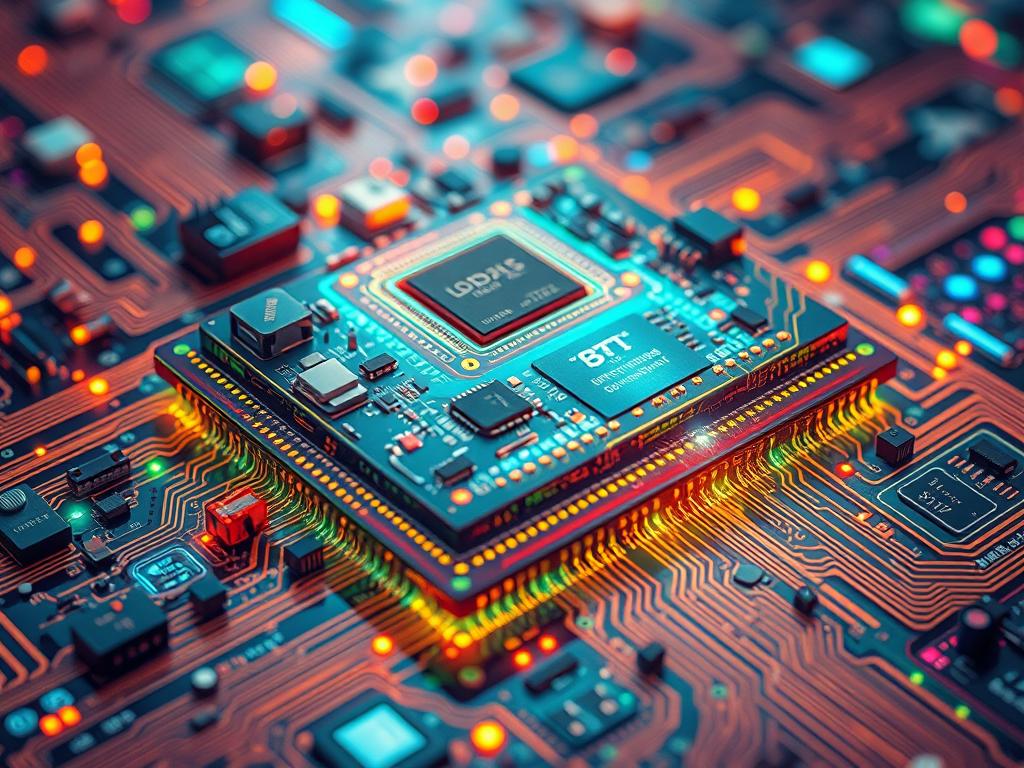By 2025, over 75 billion IoT devices will exist worldwide. This growth stems from advancements in IoT transistors. These tiny components are vital for embedded systems and edge computing.
IoT transistors are changing how we use technology. They power every connected device, from smart homes to industrial automation. New developments in transistors are expanding IoT possibilities.
These components now enable more flexible solutions across various industries. Edge computing’s rise increases demand for advanced IoT transistors. They handle complex computations at the source, reducing latency.
This shift improves real-time decision-making in IoT systems. It’s changing how we process and analyze data. IoT transistors are shaping the future of connected technologies.
They impact power efficiency and security in smart devices. These trends are transforming our digital world. The next generation of devices will rely on these innovative transistors.
IoT-Specific Requirements
IoT devices face unique challenges in transistor design. These tiny powerhouses must balance efficiency, size, and connectivity. Smart technology demands innovative solutions for these miniature components.
Power Efficiency
Low power design is crucial for IoT devices. Transistors must operate on minimal energy to extend battery life. This drive for efficiency spurs innovations in transistor technology.
Devices can now run longer on smaller power sources. This advancement opens new possibilities for IoT applications.
Size Constraints
Miniaturization is key in IoT. Transistors must shrink while maintaining performance. This size reduction allows for more components in less space.
As a result, we see smarter, smaller gadgets emerging. The IoT landscape is evolving with these compact innovations.
Connectivity Needs
Wireless connectivity is the backbone of IoT. Transistors enable seamless communication between devices. They support various protocols while keeping power consumption low.
Minimal interference is also crucial. These advancements ensure reliable connections in IoT networks.
| Requirement | Impact on Transistor Design | Benefit for IoT Devices |
|---|---|---|
| Power Efficiency | Low leakage current, optimized switching | Extended battery life, reduced energy consumption |
| Size Constraints | Smaller transistor geometries | Compact device designs, increased functionality |
| Connectivity | Integrated RF capabilities | Reliable wireless communication, network flexibility |
These requirements drive innovation in the IoT sector. Specialized transistors are in high demand. The future of smart technology hinges on these tiny yet powerful components.
Design Considerations
IoT devices need careful planning. Key factors include power use, sensor integration, and wireless connectivity. These elements shape modern IoT solutions.
Low Power Architecture
IoT devices must run long on small batteries. Smart power management is crucial. Designers use sleep modes and efficient processors to boost battery efficiency.
The aim is to create devices that work well with minimal energy. This balance ensures IoT devices are both effective and long-lasting.
Sensor Integration
Sensors collect data about the world around IoT devices. Good integration means choosing the right sensors and connecting them smoothly. This process balances accuracy, power use, and cost.

Wireless Capabilities
IoT devices need robust wireless connectivity to communicate. Designers must pick the best tech for each use case. Options include Wi-Fi, Bluetooth, and cellular networks.
The choice affects range, power use, and data speed. Each option has its pros and cons for different applications.
| Design Factor | Impact on IoT Devices | Challenges |
|---|---|---|
| Low Power Architecture | Extends battery life | Balancing performance with power savings |
| Sensor Integration | Enables data collection | Managing multiple sensor types |
| Wireless Connectivity | Allows device communication | Choosing the right protocol for each application |
These factors shape how IoT devices work in real life. Power, sensors, and connectivity are key. They help create smart, efficient, and useful IoT solutions.
Performance Optimization
IoT performance optimization relies heavily on transistors. These components boost battery efficiency, processing power, and thermal management. Together, they enhance the reliability of IoT devices.
Battery Life
IoT devices prioritize longer battery life. Engineers create low-power transistors for extended device operation. This advancement is crucial for remote sensors and wearable tech.
Processing Power
IoT devices require robust processing for complex tasks. Advanced transistors enable edge computing, processing data locally. This reduces latency and improves response times in critical applications.
Thermal Management
Thermal management is vital for IoT device reliability. New transistor designs dissipate heat more efficiently. This prevents overheating and extends device lifespan, especially in compact IoT devices.
| Optimization Area | Impact on IoT Devices |
|---|---|
| Battery Efficiency | Longer operational time, reduced maintenance |
| Edge Computing | Faster data processing, improved responsiveness |
| Thermal Management | Enhanced reliability, extended device lifespan |
Manufacturers focus on these areas to create efficient, powerful IoT devices. Advancing transistor technology promises even greater improvements. The future of IoT performance looks bright and innovative.
Security Implementation
Security is vital in IoT transistor design. Embedded systems need protection from threats. Let’s look at key security measures for IoT transistors.
Hardware Security
Hardware security is the base of IoT device protection. Secure boot processes guard against physical attacks. Tamper-resistant chips also help protect edge computing devices.
Encryption
Encryption secures data transmission in IoT. Dedicated encryption engines protect sensitive information. This method boosts security without slowing down embedded systems.

Trusted Execution
Trusted Execution Environments (TEEs) offer isolated areas for sensitive tasks. They ensure critical functions work correctly in IoT devices. This tech improves reliability in edge computing.
| Security Feature | Benefits | Implementation Challenges |
|---|---|---|
| Hardware Security | Physical protection, tamper resistance | Increased cost, design complexity |
| Encryption | Data protection, secure communication | Processing overhead, key management |
| Trusted Execution | Isolated processing, enhanced integrity | Hardware requirements, software compatibility |
These security measures create a strong defense for IoT transistors. They protect connected devices from cyber threats. This ensures safety and reliability across various applications.
Manufacturing Aspects
IoT transistor manufacturing shapes the future of connected devices. The industry faces challenges in producing tiny yet powerful components. These components drive our smart world.
Cost Optimization
Cost optimization is key in IoT transistor production. Manufacturers aim to reduce expenses while maintaining quality. This balance is crucial for widespread adoption of IoT technologies.
Successful IoT ecosystems need affordable components to thrive. Manufacturers work hard to meet this need.
Scale Production
Scaling up production meets growing demand. Automated assembly lines and robotics enable mass production of IoT transistors. This approach increases output and improves consistency.
Quality Control
Strict quality control ensures each transistor meets high standards. Advanced testing equipment detects defects. This focus on quality is vital for IoT device reliability.
| Manufacturing Aspect | Impact on IoT | Key Challenge |
|---|---|---|
| Cost Optimization | Wider adoption of IoT | Balancing cost and quality |
| Scale Production | Meeting market demand | Maintaining consistency at high volumes |
| Quality Control | Ensuring device reliability | Implementing effective testing methods |
Miniaturization in IoT transistors presents new manufacturing challenges. Production techniques must evolve to maintain precision. This push for smaller, powerful components reshapes IoT manufacturing.
Integration Challenges
IoT device development faces significant hurdles in integrating various components. Compact, efficient designs must combine multiple functions. This evolution of embedded systems creates unique challenges.
System-on-Chip
System-on-Chip (SoC) technology is changing IoT hardware. SoCs enable smaller, more power-efficient devices by consolidating components on a single chip.
This integration requires careful design considerations. Balancing performance and power consumption is crucial for effective SoC implementation.

Sensor Fusion
Sensor integration is vital for IoT devices to gather accurate environmental data. Sensor fusion techniques combine inputs from multiple sensors, improving data reliability.
This process requires advanced algorithms and efficient embedded systems design. Effective processing of diverse data streams is essential for optimal device functionality.
Communication Protocols
Wireless connectivity is crucial for IoT, but implementing various protocols is challenging. Devices must support Wi-Fi, Bluetooth, and cellular networks for seamless connectivity.
This requires flexible hardware designs and robust software. Ensuring compatibility across different environments is key to successful IoT implementation.
“The key to successful IoT integration lies in balancing performance, power efficiency, and connectivity needs within compact form factors.”
Overcoming integration challenges is crucial for creating versatile IoT devices. Innovative solutions in sensor fusion, SoC design, and wireless protocols are shaping connected devices.
As the industry progresses, these advancements will continue to drive IoT development. The future of connected devices depends on addressing these integration challenges effectively.
Real-World Applications
IoT transistors are revolutionizing industries and daily life. These tiny powerhouses enable smart devices to use edge computing and wireless connectivity. Let’s explore how these advanced technologies are reshaping our world.
Smart Devices
Smart homes depend on IoT transistors for smooth operations. These devices use edge computing to process data locally, boosting speed and reliability.
High-speed wireless communication transistors ensure devices connect seamlessly. This creates a truly intelligent living space.
Industrial IoT
In factories, IoT transistors power sensors that monitor equipment health. They enable real-time data analysis at the edge, boosting efficiency and reducing downtime.
Wireless connectivity allows for remote monitoring and control. This improves overall plant reliability.
Consumer Products
Wearable tech and smart appliances benefit from IoT transistors’ small size. These components offer long battery life and strong wireless connectivity.
Fitness trackers and smart fridges use these transistors. They create products that blend smoothly into our daily routines.
| Application | Key Benefit | Example |
|---|---|---|
| Smart Homes | Energy Efficiency | Intelligent Thermostats |
| Industrial IoT | Predictive Maintenance | Equipment Sensors |
| Consumer Products | Enhanced User Experience | Smartwatches |
IoT transistors keep evolving, promising more exciting innovations. These advancements will push tech boundaries and boost our quality of life.
Future Developments
IoT transistors are evolving rapidly, with exciting advancements on the horizon. These developments will reshape connected devices. They’ll push the boundaries of low power design and functionality.
Energy Harvesting
Energy harvesting techniques will revolutionize IoT devices. They’ll capture ambient energy from light, heat, or vibrations. This could eliminate the need for battery replacements.
These breakthroughs align with the growing demand for sustainable IoT solutions. They’ll create maintenance-free devices that last longer.
New Materials
Innovative materials are enhancing transistor performance. Researchers are exploring graphene, carbon nanotubes, and other exotic substances. These could create smaller, more efficient transistors.
New materials could dramatically improve miniaturization and energy efficiency. This addresses key challenges in IoT device design.
Advanced Integration
Advanced integration techniques are the future of IoT transistors. Engineers are combining sensors, processors, and communication modules into single chips. This supports cost optimization and enables more compact IoT devices.
As these technologies mature, expect a new generation of smart products. They’ll be smaller, smarter, and more capable than ever before.


